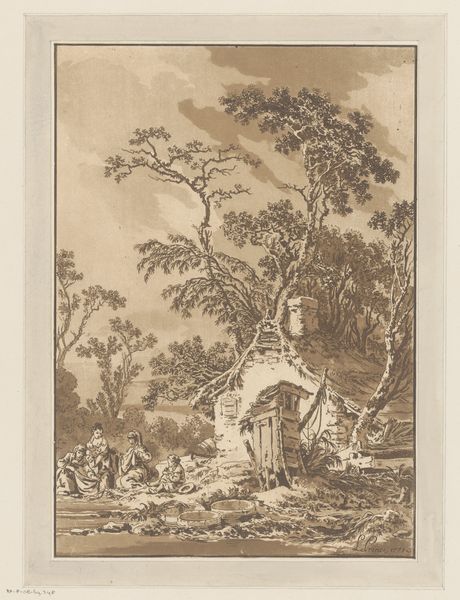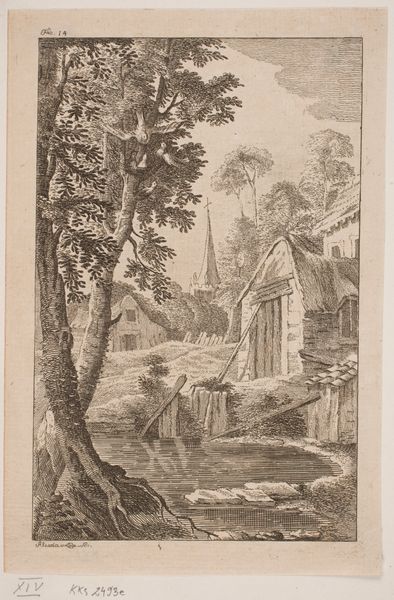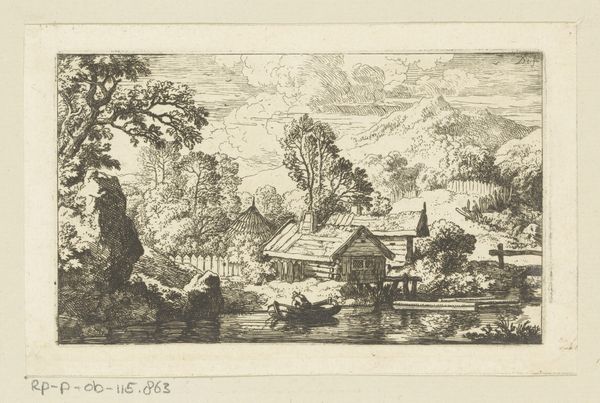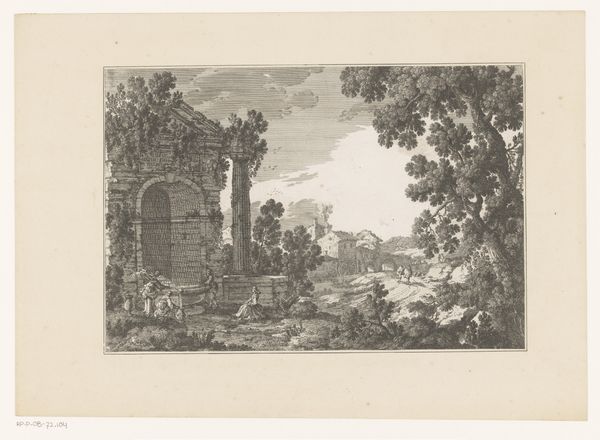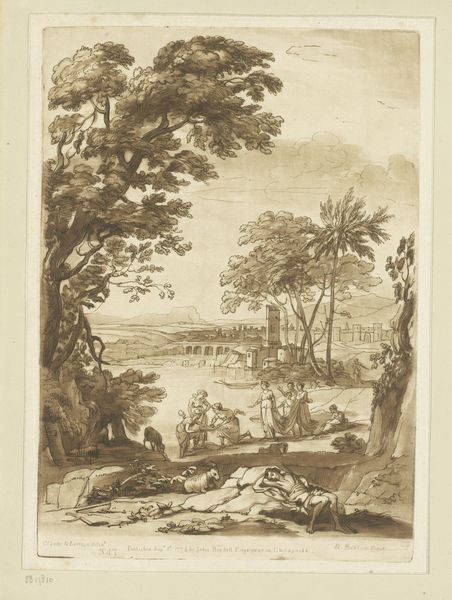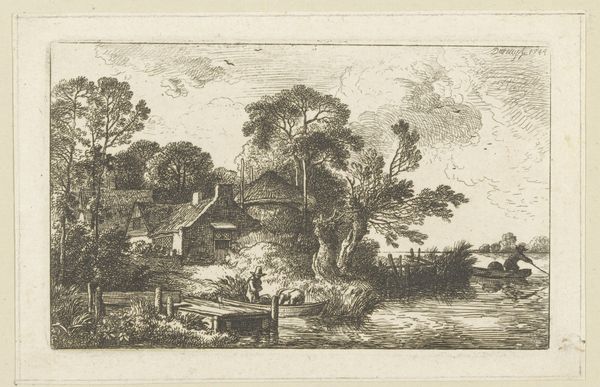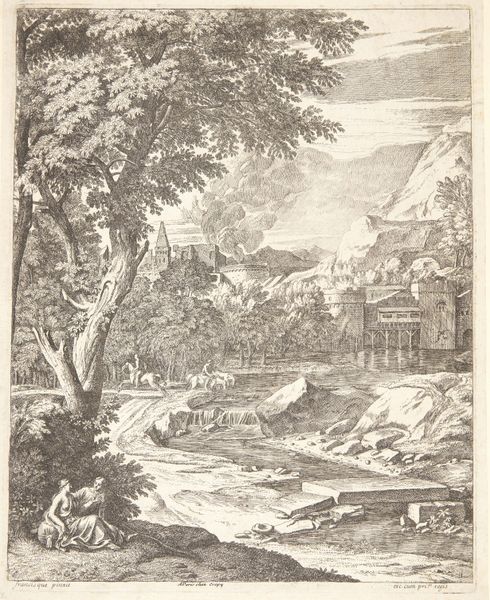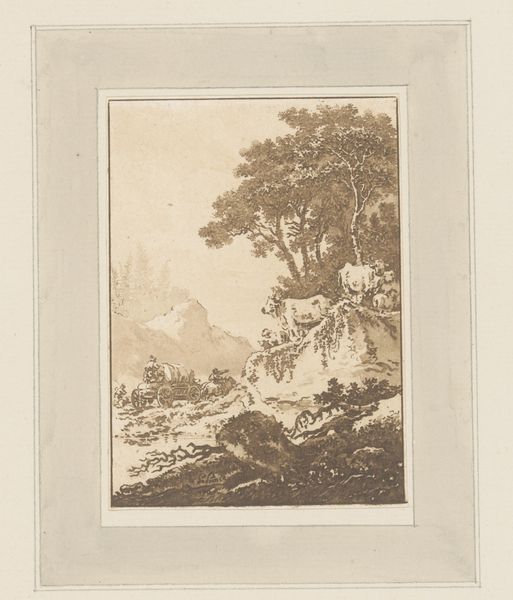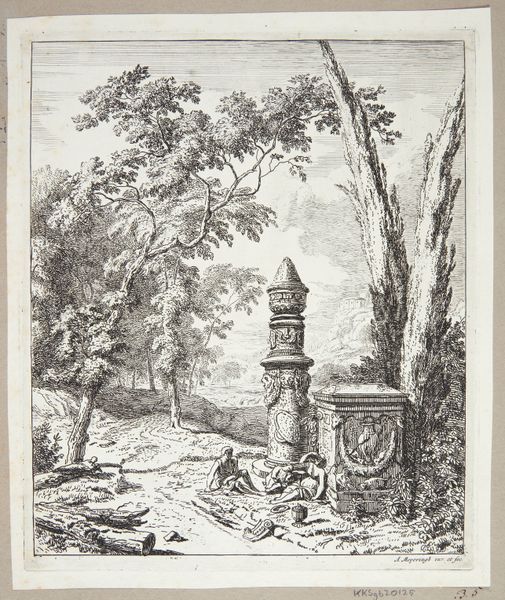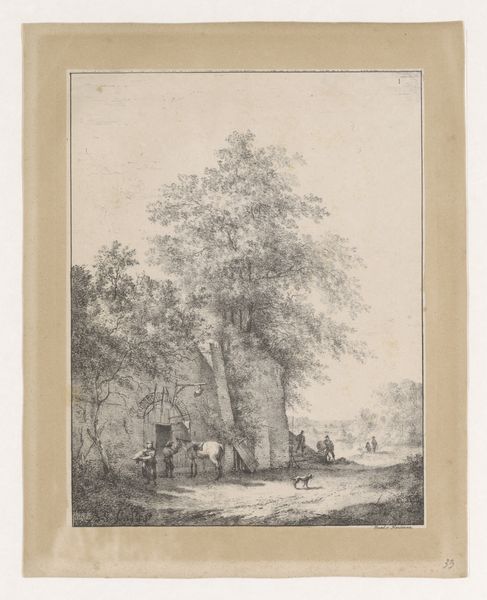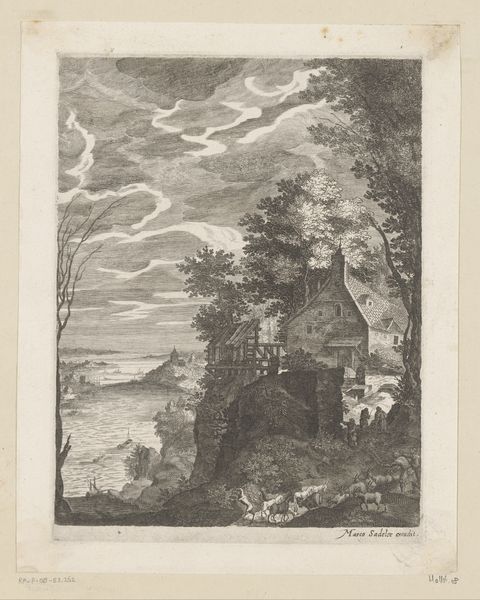
#
landscape illustration sketch
#
toned paper
#
light pencil work
#
pencil sketch
#
old engraving style
#
etching
#
ink drawing experimentation
#
pen-ink sketch
#
pencil work
#
watercolour illustration
Dimensions: height 326 mm, width 234 mm
Copyright: Rijks Museum: Open Domain
Editor: Here we have "Fishermen in a Boat Hauling in Their Nets" created around 1771 by Jean-Baptiste Leprince. It's currently housed in the Rijksmuseum. I’m really struck by how the light and shadow play across the page. What visual elements stand out to you? Curator: The immediate impact lies in the compositional arrangement. Leprince has crafted a landscape of contrasting textures. Notice how the soft, almost ethereal quality of the sky opposes the intricately detailed foliage and the defined structures. The monochromatic scheme emphasizes these formal relationships. Editor: That makes sense. How does that emphasis affect how we see the figures within the landscape? Curator: The figures become integral to the overall composition, rather than existing solely as subjects. Observe their positioning—clustered in the lower left, acting as a visual anchor, balancing the weight of the architecture on the right. Their placement dictates how the viewer’s eye travels across the picture plane. Editor: So you’re saying it is more about how they're placed and less about who they are or what they are doing? Curator: Precisely. While the title points to their activity, the artistry is how Leprince utilizes them as elements to achieve formal balance. The sweeping diagonal of the sail, for instance, directs our gaze toward the tower in the background, creating spatial depth. The use of hatching and cross-hatching builds up the form of the trees and emphasizes a dynamic play between areas of dark and light. Editor: It's amazing to think about all those elements being connected. Thanks to you, I'm really looking at this with new eyes and starting to appreciate all the details! Curator: Indeed! Formal analysis reveals how artists manipulate visual components to construct meaning and aesthetic harmony.
Comments
No comments
Be the first to comment and join the conversation on the ultimate creative platform.
